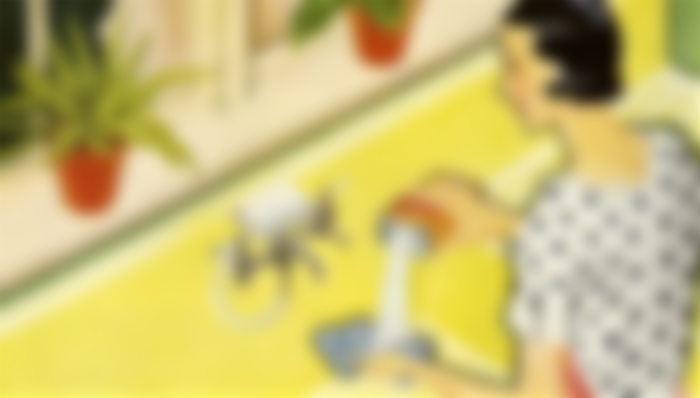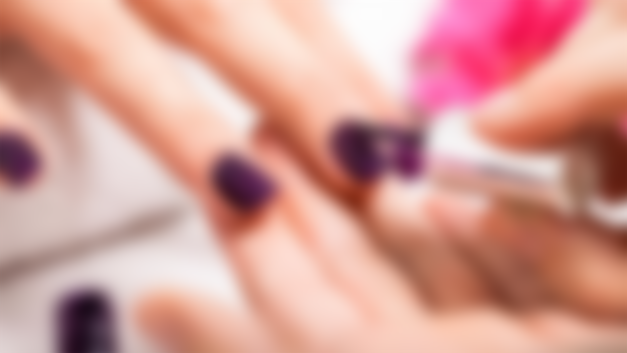We protect our health and to reduce the risk of cancer, we avoid smoking, excessive alcohol or sunbathing in the solarium.
And we may not be aware that there is a whole range of products around us, those that we do laundry, smear on our face or varnish our nails, freshen the air, and that contain chemicals that are known to be carcinogenic.

Changes in cellular DNA can lead to cancer. These changes can be hereditary or occur as a result of the choice of the way we live, the pollution or the products we are exposed to at work or at home. Even if they do not directly alter DNA, carcinogens can affect cells in a way that later leads to problems.
If we use products that contain carcinogens occasionally, the chances of something happening are minimal, but if their use is frequent, the risk is high. Not all carcinogens have the same potency, exposure to some is particularly harmful.
And if you have cancer in your family, the risk can be very high. You need to feel safe in your home so take a look at some of the following things and consider eliminating them.
1. Air fresheners

If your home has some bad smell, you might reach for air fresheners. A 2008 study tested 6 such products for harmful substances. Five of them had one or more carcinogenic chemicals. There are over 20 harmful components in one air freshener that we plug into the electricity to gently release the smell, seven of them are poisonous. Fragrance products do not have to have a label with a list of ingredients, so you need to be careful about the risk you are exposing yourself to.
2. Cleaning products

Products that keep our home clean can contain carcinogenic substances. A large number of products can harm the respiratory system, out of 2,500 products over a quarter have carcinogenic ingredients, according to a study in America conducted by The Environmental Working Group.
If you want to know exactly what these products contain, it could be difficult, not all ingredients are written on the labels. It is best to look for eco friendly or green products, though, you still need to be careful as they too can be harmful and contain carcinogenic ingredients.
3. Odor softeners in dryer sheets

Thanks to these sheets, the laundry comes out of the dryer soft and fragrant. However, the smell in them can pose a health risk because the toxins from the leaves pass to the clothes and thus to our skin.
The same environmental group tested 25 scented household products. Half of the products had at least one carcinogenic ingredient. The problem is even bigger because a lot of products do not say exactly what they contain.
4. Pesticides

If you have trouble growing fruits and vegetables in your garden, due to weeds, insects or small animals, you are probably using some pesticides to help grow and repel pests. Pesticides are carcinogenic. An increasing number of studies find evidence that pesticides increase the risk of cancer.
It is not known exactly which ingredients pose a risk, but some chemicals like glyphosate are a common ingredient in pesticides. For WHO glyphosate, the World Health Organization considers it likely to be carcinogenic, and the European Food Safety Authority thinks otherwise. Glyphosate, of course, affects hormone balance. If you choose to use pesticides in growing your fruits or vegetables, at least make sure they don’t touch your skin.
5. Food colors

Every processed food, beverage, vitamin, or dietary supplement contains artificial colors. Studies have shown that 9 types of dyes used in the diet can be carcinogenic. Since 1955, the use of paint has increased fivefold.
Some of the food colors are not dangerous to humans, but some scientists think they have no place in food. A lot of research is still needed to establish how colors affect people, but in the meantime it might be wise to avoid them.
6. Collar against pests for pets

You don’t clean the house with this product, but if you have a pet that you walk outside, it certainly has this necklace. The two chemicals it contains can be carcinogenic, propoxur and tetrachlorovinphos. Not only do they potentially cause cancer but they can also cause neurological damage in children.
After two weeks of carrying, pets can have harmful levels of these chemicals on their fur. This is dangerous for children who often come in contact with furry pets. The study was small, only 9 dogs and five cats were tested, so more testing is needed to assess exactly how dangerous they are.
7. Wet creams

Moisturizing the skin daily is good for care. A lot of face creams contain parabens, proven carcinogenic chemicals. These common condoms are used in liquid powders, creams, and anti-aging products. Parabens prevent the growth of bacteria and fungi in products.
The European Commission on Endocrine Disruption has declared these chemicals the first substance to disturb the endocrine balance. This can potentially cause tumors and other disorders. Parabens have been detected in breast tumors. According to WebMD, parabens affect estrogen, and too much estrogen can stimulate tumor growth
8. Laundry detergents

We have to wash clothes, and detergents probably have the chemical 1.4 dioxane, which is not only found in detergents. It is found in car coolants, cosmetics, bath products and even in the air we breathe. Studies show that animals exposed to this chemical are more likely to develop tumors during their lifetime.
There is little information on how people react to exposure to 1.4 dioxane during their lifetime, but the chemical is considered carcinogenic. The Huffington Post writes that drinking water is one of the biggest sources where we are exposed to this chemical. So, its complete avoidance is completely impossible.
9. Nail polish

Men may not need to worry about this. Women who like varnished nails might have to rethink what they use. Many nail polishes contain formaldehyde, which increases the risk of cancer.
Formaldehyde is also present in disinfectants used in manicure and pedicure salons, so the risk is even higher if you do not paint your nails yourself. At great risk are those who work in an industry that uses formaldehyde, and going to a hand and foot care salon occasionally will not do any harm.
10. Scented candles

If your favorite way to remove bad odors in your home is by lighting scented candles, it can be detrimental to your health. Some studies show an increased risk in children whose parents used to light candles during pregnancy or breastfeeding.











Carcenogenic cells are presents every persons body.Just they are inactive for now but can activated any time. Changes in cellular DNA can lead to cancer. These changes can be hereditary or occur as a result of the choice of the way we live, the pollution or the products we are exposed to at work or at home. Even if they do not directly alter DNA, carcinogens can affect cells in a way that later leads to problems.
If we use products that contain carcinogens occasionally, the chances of something happening are minimal, but if their use is frequent, the risk is high. Not all carcinogens have the same potency, exposure to some is particularly harmful. Thanks for this nice explanation!!!